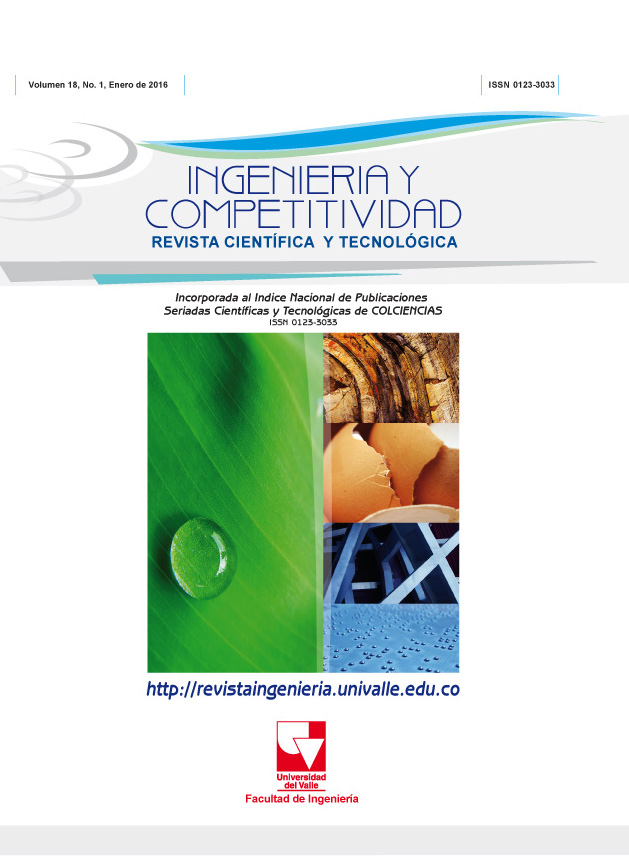Kinetic and isotherms of biosorption of Hg(II) using citric acid treated residual materials
Contenido principal del artículo
In this paper was studied the adsorption of Hg(II) by using lignocellulosic residual biomass from bagasse palm and yam peels, which were chemically treated with citric acid. The concentrations of Hg(II) ions in the supernatant were analyzed by the formation of the Hg(CNS)4 - 2 complex, which was measured through the absorption in the ultraviolet region (281nm). It was determined that the hydroxyl and carboxyl groups present in the chemically modified biomaterials have a huge contribution in the adsorption process. We estimated a maximum capacity of adsorption about 385,80 and 356,86mg/g for citric acid treated yam peels and bagasse palm, respectively. It was also determined that the Elovich kinetic model and the Freundlich isotherm model were the best to describe the adsorption process of Hg(II) onto both biomaterials
- Ácido cítrico
- bioadsorción
- mercurio
- residuos lignocelulósicos.
Descargas
Los autores que publican en esta revista están de acuerdo con los siguientes términos:
Los autores ceden los derechos patrimoniales a la revista y a la Universidad del Valle sobre los manuscritos aceptados, pero podrán hacer los reusos que consideren pertinentes por motivos profesionales, educativos, académicos o científicos, de acuerdo con los términos de la licencia que otorga la revista a todos sus artículos.
Los artículos serán publicados bajo la licencia Creative Commons 4.0 BY-NC-SA (de atribución, no comercial, sin obras derivadas).





